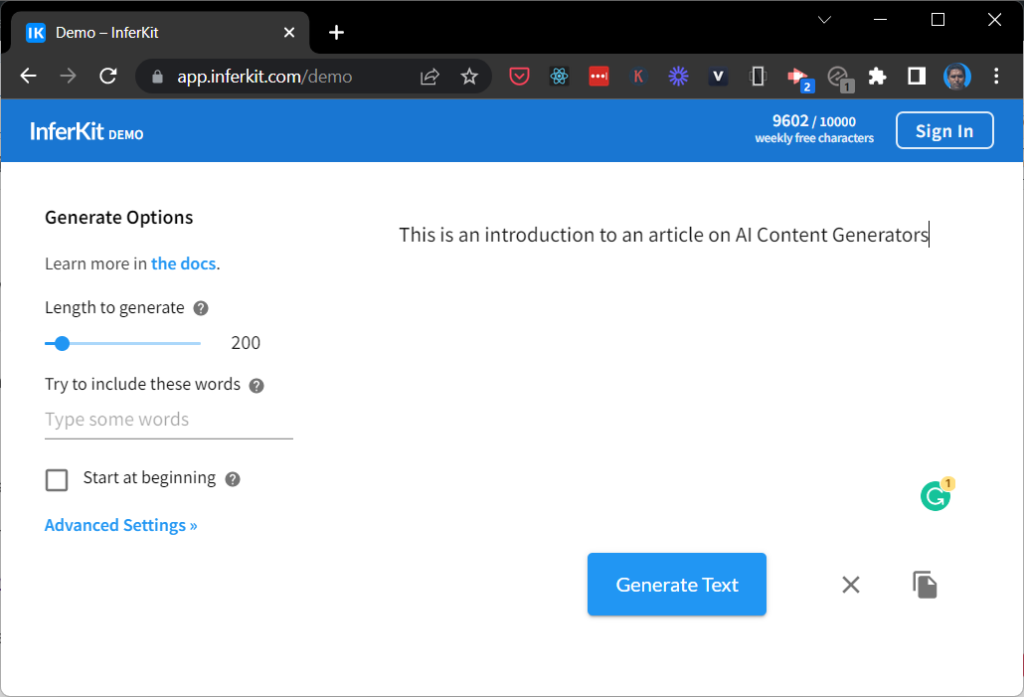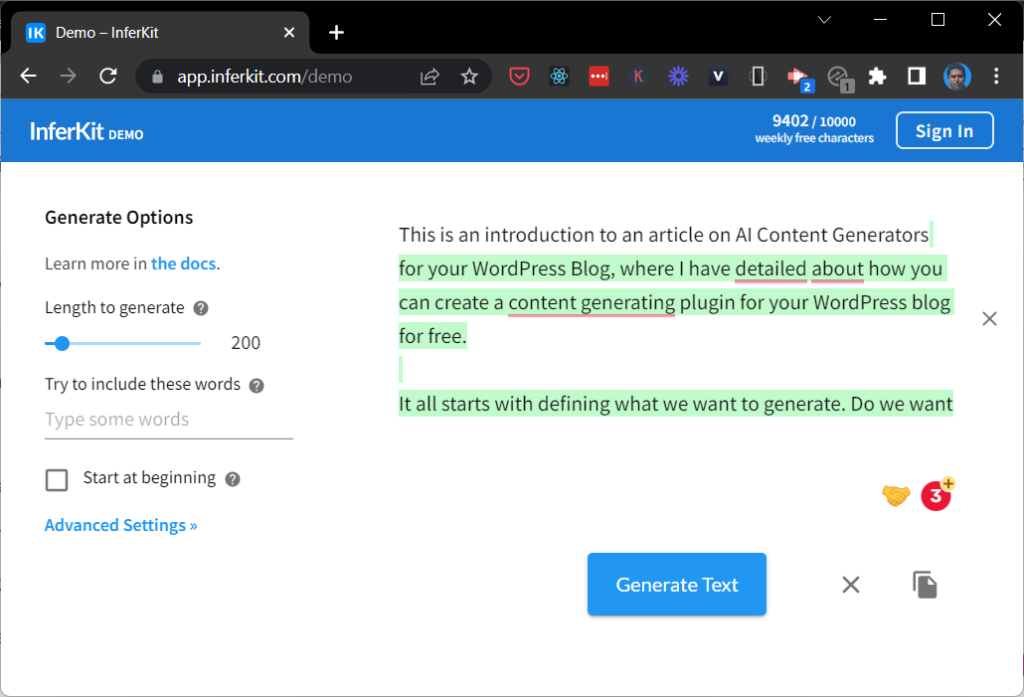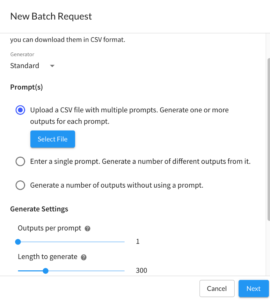Best guide to Inferkit with demo and examples
 Harish Garg
Harish GargInferkit is an AI-based text generation tool. You can use it to generate text from a given text or a prompt.
Inferkit was created by Adam Daniel King.
It is meant to be used for fun and entertainment purposes.
Inferkit also provides an API for developers to call from their apps.
Table of Contents
- Using Inferkit demo
- Inferkit Text Generation options
- Inferkit Pricing
- Inferkit API
- Batch Requests
- Alternatives
Using Inferkit demo
The best way to get started with Inferkit and see its capabilities is by using the official Inferkit demo.
To use the Inferkit demo,
- Open inferkit demo in your browser.
- write a prompt, for example ,

- press generate text button and see the generated text.

Inferkit Demo is free and you can use it without signing up. And it gives you 10000 free chars of generations every week for free.
Inferkit Text Generation options
There are a few options that you can customize to change the kind of text gets generated by Inferkit. These are,
- Length to generate. This is measured in characters in the generated text and controls how long the generated text wants to be.
- Include these words: this option can tell Inferkit to specially include certain words in the generated text
- Start at the beginning: This tells Inferkit that you want your prompt to be used as a starting point for the generated text.
The above are the most important ones that you should play around with. There are a couple of advanced settings that you may not need to touch on a regular basis.
- Pause at the end
- Nucleus sampling top p
- Sampling temperature
Inferkit Pricing
Inferkit offers two price tiers based on subscription.
- The basic plan that costs USD 20 per month and comes with 600,000 chars (for generation)
- The premium plan that costs USD 60 per month and comes with 2.5 million chars
- Each request costs a minimum of 100 chars.

The pricing is different from OpenAI’s GPT-3 as GPT-3 has no monthly subscription commitment.
Inferkit API
Inferkit also provides an API to use the AI model from inside code. This enables all kinds of use cases for example, using inside scripts, SaaS products, etc.
You need to be signed up for a paid account to have access to the API.
A typical API call is made like this (this example is for the command line)
$ curl \ -H "Authorization: Bearer dac610f0-1dd7-412b-b157-3fa45e82f7a3" \ -d '{"length": 100, "prompt": {"text": "Hello world!"}}' \ https://api.inferkit.com/v1/models/standard/generate
You can call the API from python (using the requests module), JavaScript, or any other programming language that has an API-calling capability.
Batch Requests
You can also batch your text generation requests. It supports the uploading of requests through csv also.

Alternatives
GPT-3 vs Inferkit
Inferkit is a next-generation AI model just like GPT-3. However, that’s where the similarities end.
It’s not fair to compare Inferkit with GPT-3. GPT-3 is a much larger AI model. It’s backed by a much bigger and much better-financed organization.
Ultimately it all depends upon your use case and whether OpenAI gives you access or not.
Other alternatives
There are actually quite a few alternatives to both Inferkit and GPT-3 available now.
I have covered some of them in this guide.
Subscribe to my newsletter
Read articles from Harish Garg directly inside your inbox. Subscribe to the newsletter, and don't miss out.
Written by

Harish Garg
Harish Garg
I build systems that blend AI and automation to solve real-world problems